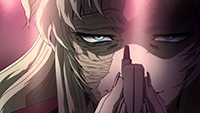The Bloody Scourge
This letter is torn and dirt covered
To Burkhard, Archmage of Remia Academy of the Arcane,
I, Matthias, priest of the village known as Tusch, am writing to you in the faintest of hopes that this letter somehow reaches you in time. Our small village has become victims of the Bloody Scourge and in addition to a number of sick adults and elderly; we have over two dozen children who are showing signs of the disease. Enclosed is all the coin we have in our village in the hopes that we can purchase the services of one of your rune casters to at help these children pass the test the Gods have set before them. We've sent this letter and payment with our fastest rider in the hopes of reaching you before its too late to save anyone.
May Eher bless you,
Matthias
A scribbled note is attached at the bottom
Guess that God of Judgment found them wanting; the rider got attacked by bandits and his coin taken a day away from Llyne. Must have been one of the parents, he refused to leave the building until I promised I would take this to the Archmage personally. Add this to the archives as a record of the outbreak in 573. - Magus Augusta
Transmission & Vectors
Causes
Thankfully, because the trees can only germinate and produce seeds with assistance from extreme heat, there aren't that many around, and the Bloody Scourge only happens every few decades. Unfortunately, the cause is not known to the people living in surrounding countries as there is no equipment powerful enough to see the spores. Due to this ignorance, some incredibly wealthy nobles who like the flowers have been trying to figure out a way to bring the trees to the mainland.









Enjoyed the read of your detailed work. Whether you made them intentionally or not, there are some areas that could be used as plot hooks, such as, "...when Temmo the Shaman of Rushil wrote about the devastating illness that took the lives of all but one of his children." 'Why did that child live? Are there records of others survival?' Could easily be questions players ask. A question the illness follows the pattern between days as 8-9-10-9-8, any reason why that pattern? (There doesn't have to be a reason just a curiosity.)
I did leave those plot threads in there intentionally. They're ideas I just haven't gotten around to writing down yet. The days were just what I thought would be a realistic amount of time for each stage although, I am open to suggestions if there is a better distribution of time.